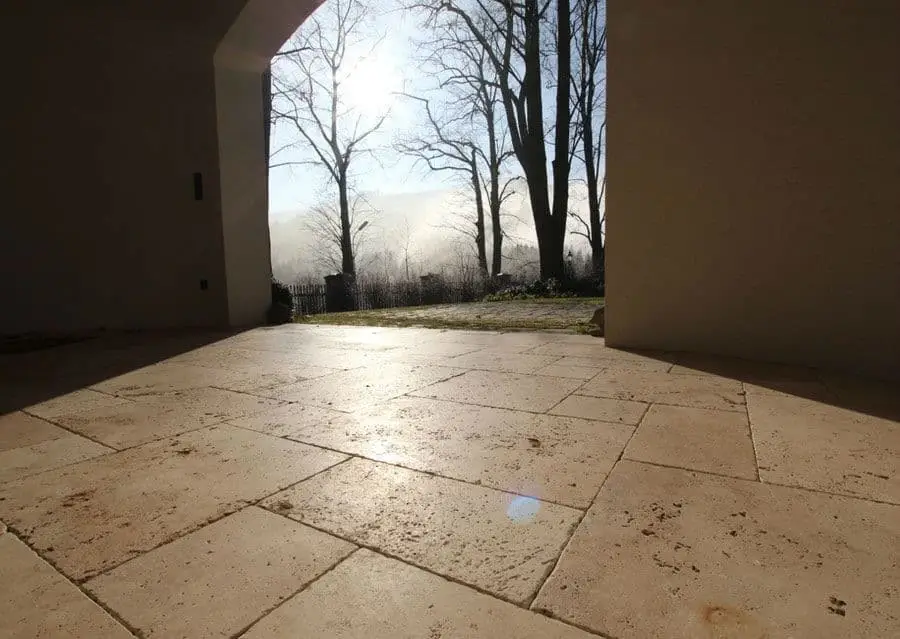
Natural stone in winter
Frost and natural stone
Whether a Natural stone The ability of natural stone to withstand ice and frost depends on its water absorption capacity. The more water the material absorbs, the more at risk it is in sub-zero temperatures. If a lot of liquid gets into the stone, it expands when it freezes and causes flaking and cracks. Problems therefore only arise in cold temperatures if there is water in the natural stone. However, large pores in natural stone are not automatically bad. Because if the natural stone can release the liquid again without any problems, it is still frost-proof. To ensure that the water can be sufficiently released, the choice of substrate is crucial. Thomas Schubert, Managing Director of SCHUBERT STONE, therefore recommends a subfloor made of high-grade chippings or high-grade chippings mortar so that water can seep into the subfloor without accumulating. You should also ensure a slope of 2 % during installation to ensure good water drainage. On flat surfaces, there is a risk of rain or melt water accumulating. If laid professionally, there is no doubt about its frost resistance.
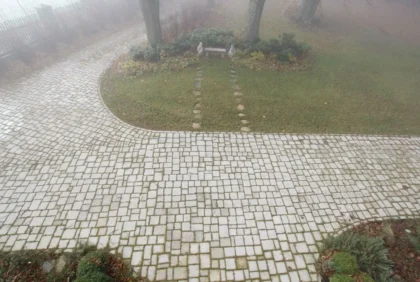
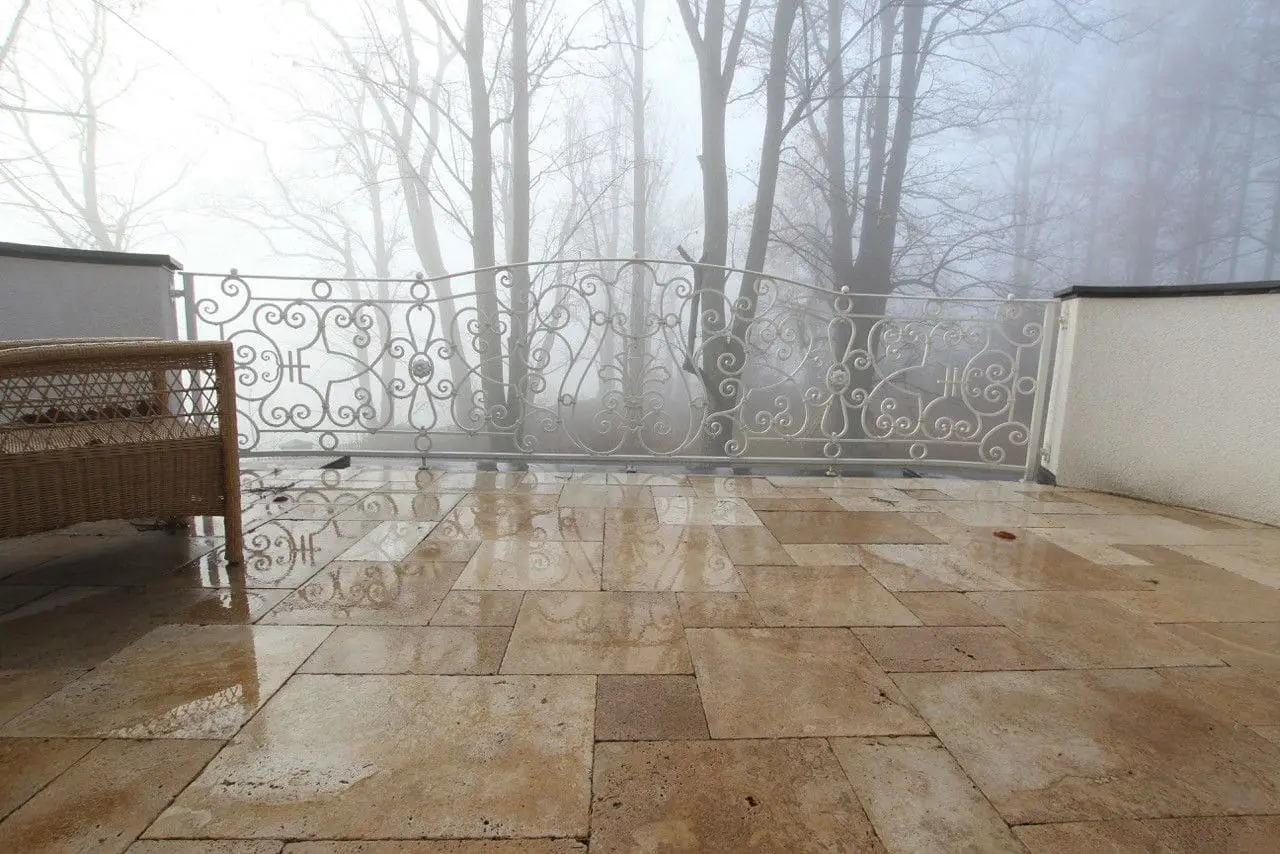
The impregnation of natural stone
Proper care is an important factor in ensuring that natural stone survives a harsh winter. To protect the stone surface, the stone slabs should be impregnated. The impregnation penetrates the stone, but still leaves the stone enough "air to breathe", i.e. water exchange is still possible.
Road salt and natural stone
To keep your own sidewalks, steps and patios free of ice and slippery surfaces during frost, road salt often seems the most obvious solution. However, stone expert Thomas Schubert advises against treating natural stone with road salt: "The salts can attack the surface of the natural stone during the freeze-thaw cycles, which can lead to dull patches, stains and discoloration". Caution is particularly important with natural stone types such as Limestone, Sandstone or Travertine offered. Granitebasalt or Quartzite are more resistant and keep out snow and ice thanks to their stone structure. According to Thomas Schubert, road salt should generally not be used on natural stone slabs in frosty temperatures and only sand should be used. Large-scale use of road salt is also bad for the soil and plants and damages the groundwater. Sand-split mixtures fulfill the same purpose as de-icing salt, they ensure slip resistance on frozen and icy surfaces and thus prevent accidents caused by falling.
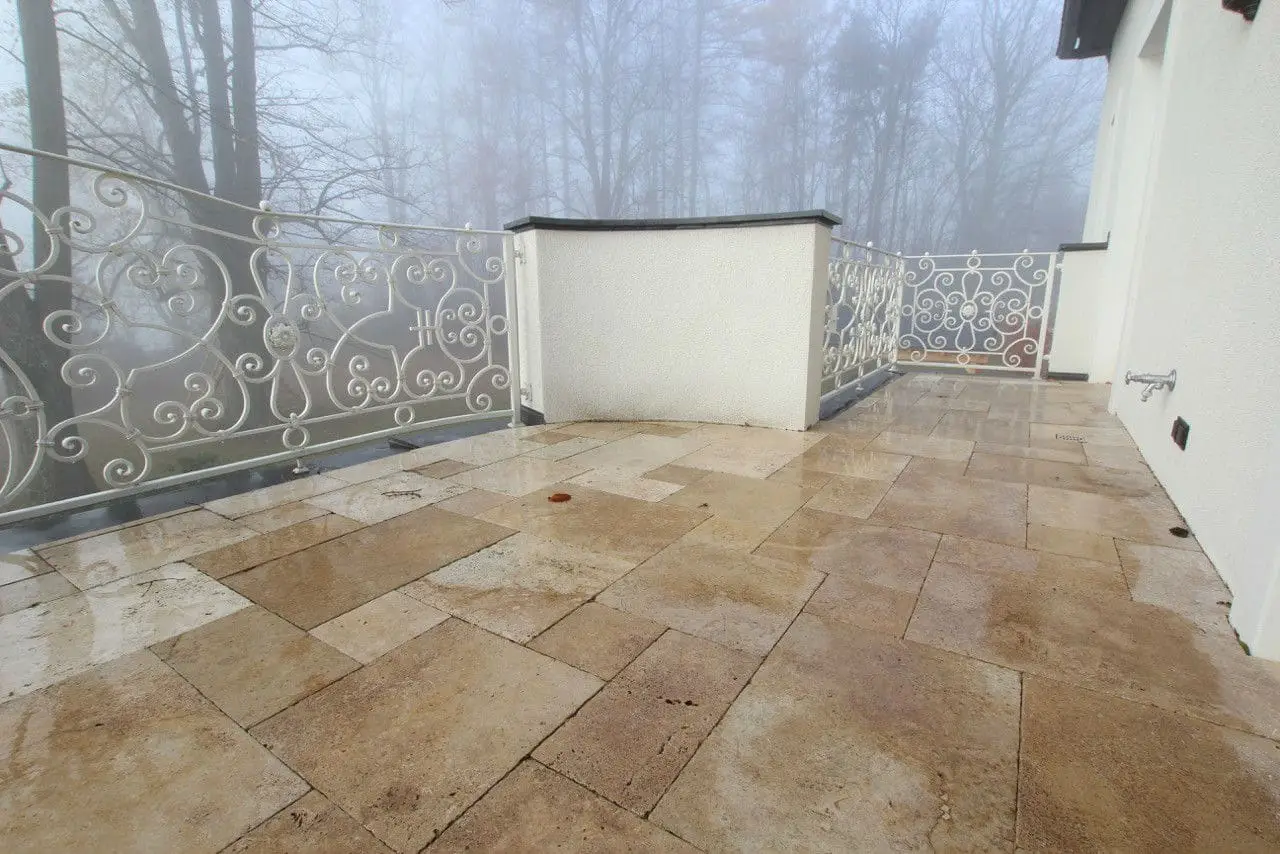
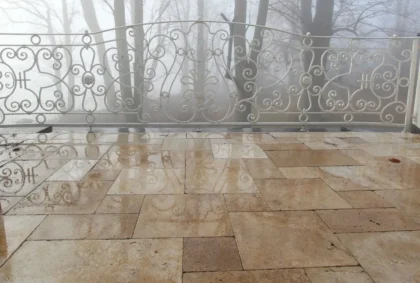
Advice for long-lasting pleasure
As you can see, not all natural stone is the same. Each stone has its own color and properties. Not every natural stone is suitable for patios, outdoor steps or garden design. Good planning and professional workmanship are therefore essential. You should therefore take enough time for competent and comprehensive advice before laying an outdoor area in natural stone in order to clarify questions about frost resistance and the like.